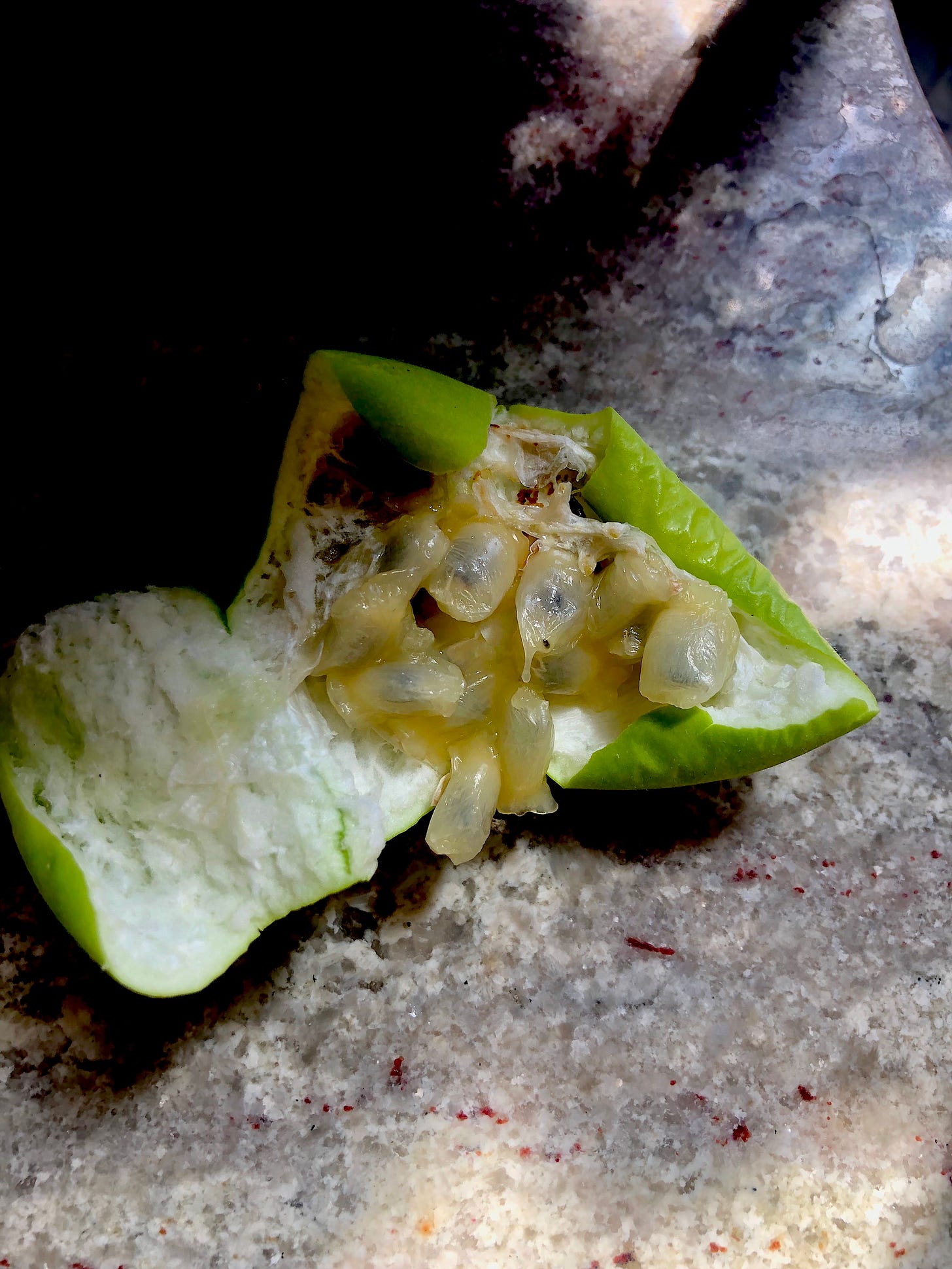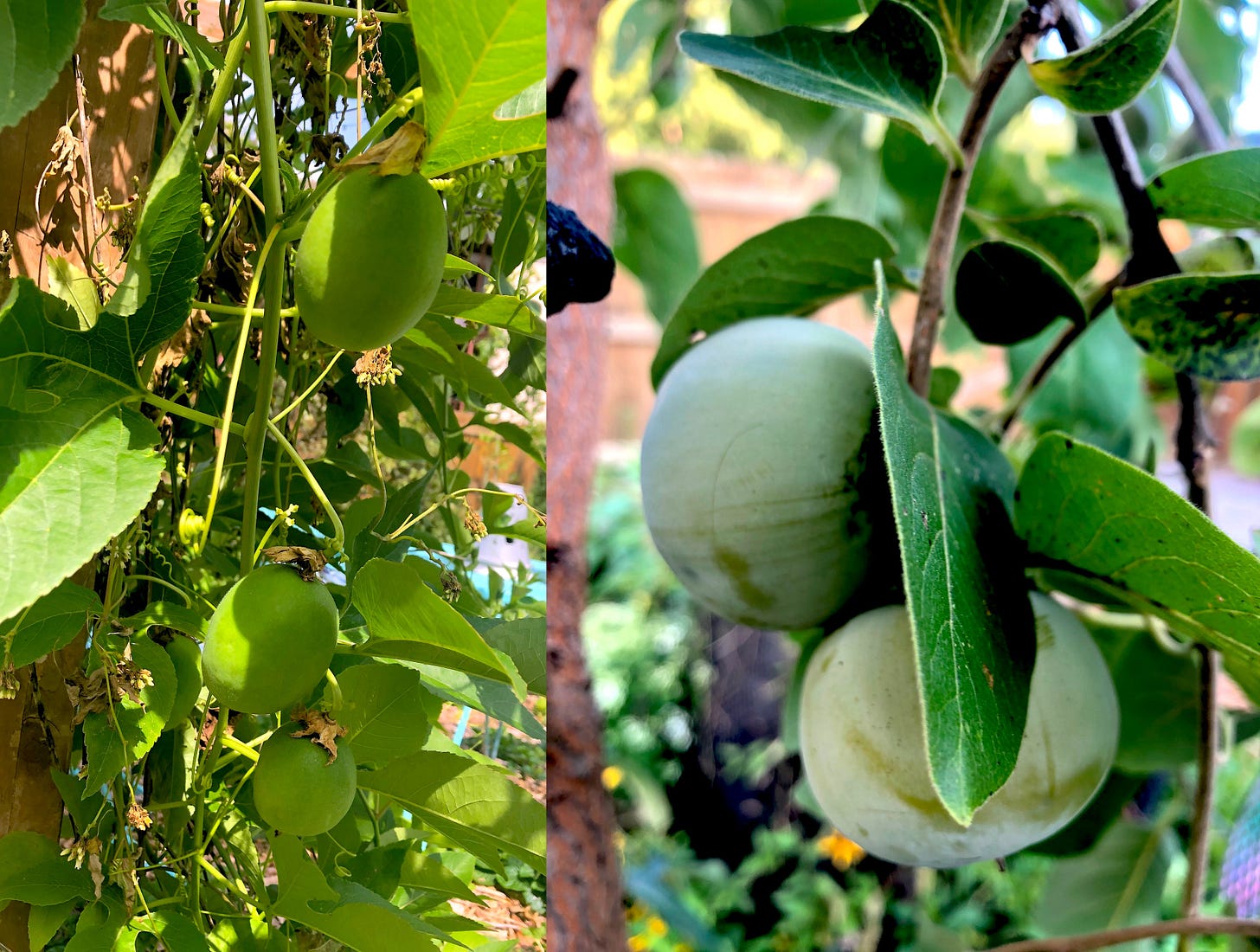Maypop and persimmon: edible North American natives to plant this fall
Maypop, AKA passionflower, is a hardy native vine with 'alien' blooms. And did you know we have a native persimmon tree? Both are incredible edibles, too!
Those of you who’ve been following us for a while know I love garden plants with “stacked functions.” This permaculture phrase basically means “plants that multitask.” They have more than one use; for example, native violets are a pretty, soil-stabilizing ground cover, a host plant for fritillary butterflies, and they’re edible. Similarly, maypop and persimmon, both native to North America, are:
Easy to grow, as they’re right where they’ve evolved as a plant species and need no extra care
Important food sources for native insects and animals
Edible, nutritious, and medicinal for humans
A source for other human-use products, such as wood
With all of the above, maypop and persimmon more than earn their place in your garden, and I recommend planting them this fall. Here’s what you need to know.
Maypop, AKA Passionflower
I had fond memories of this flowering, fruiting vine from my own childhood, when we were stationed in San Antonio, Texas, and then again from my grad school days in Miami. My ex and I rented a house near the university, and on our back patio, we enjoyed the canopy provided by a well-established, year-round vine. It attracted scores of zebra longwing butterflies with blooms that look like something grown in a lab on the Starship Enterprise.
So when I read that its range extends up into Missouri, I had to have it.
Because it needs another vine for cross-pollination, I purchased both purple passionflower, Passiflora incarnata, and blue, Passiflora caerulea. What I didn’t know then is that the blue is a little bit more precious, and does better in its more common southerly habitat of South America. Still, it exploded with growth in late summer for two seasons, even reseeding in several other garden spots, including a very late-comer vine this year. Though it’s rarely lived long enough each season to flower and fruit, its purple cousin has more than made up for it.
Surprisingly, some people—such as Dan Masoliver over at the otherwise on-point Earthworm Substack (I recommend you check it out)—think this vine’s fruit is inedible, but that’s simply not true. If you’re growing passionflower and just letting those maypop pods go to the squirrels, you’re seriously missing out.
What you need to do is wait until the skins begin to pucker in late fall before harvesting the pods.

Do that, and you’ll be treated to the most delicious burst of tropical goodness imaginable. The fruit is much like the inside of a pomegranate. Pop open the pod, and you’ll see a nest of pulp threads, each with its own seed. The seeds are a bit crunchy, but they are edible.
Our favorite way to imbibe maypop is to press it for the juice, thereby avoiding the seeds, and use the juice to flavor homemade ice cream and mixed drinks (with or without alcohol).
Do you have any maypop recipes to share?
My only caveat for those of you in zone 6 or colder (see USDA map here) is that the vines die all the way back each winter. I’d hoped it would cover our pergola just like that one in Miami did, but we’re just too far north to get year-round growth. However, they grow back each spring like crazy, so the amount of harvest we’ve received from just one vine start, at a cost of $2 US? It’s like the vine pays for itself.

This vine does need support, so let it clamber up the side of a fence to which you’ve added some wire, or use a trellis. The little tendrils need something small in diameter to grasp, such as chicken wire. Maypop can be hard to track down (I’ve never seen one at a garden center), but here’s a star seller on Etsy who’s offering live plant starts. (This is totally an affiliate link; if you purchase using the link, we might one day, eventually, see a very tiny commission, at no extra cost to you).
Persimmon
We planted the first of three persimmon trees, a cultivated native variety, or ‘nativar,’ Diospyros virginiana ‘Yates’ in the fall of 2018, one of the first things we planted. It’s now bearing fruit.
Keep reading with a 7-day free trial
Subscribe to Brunette Gardens to keep reading this post and get 7 days of free access to the full post archives.






